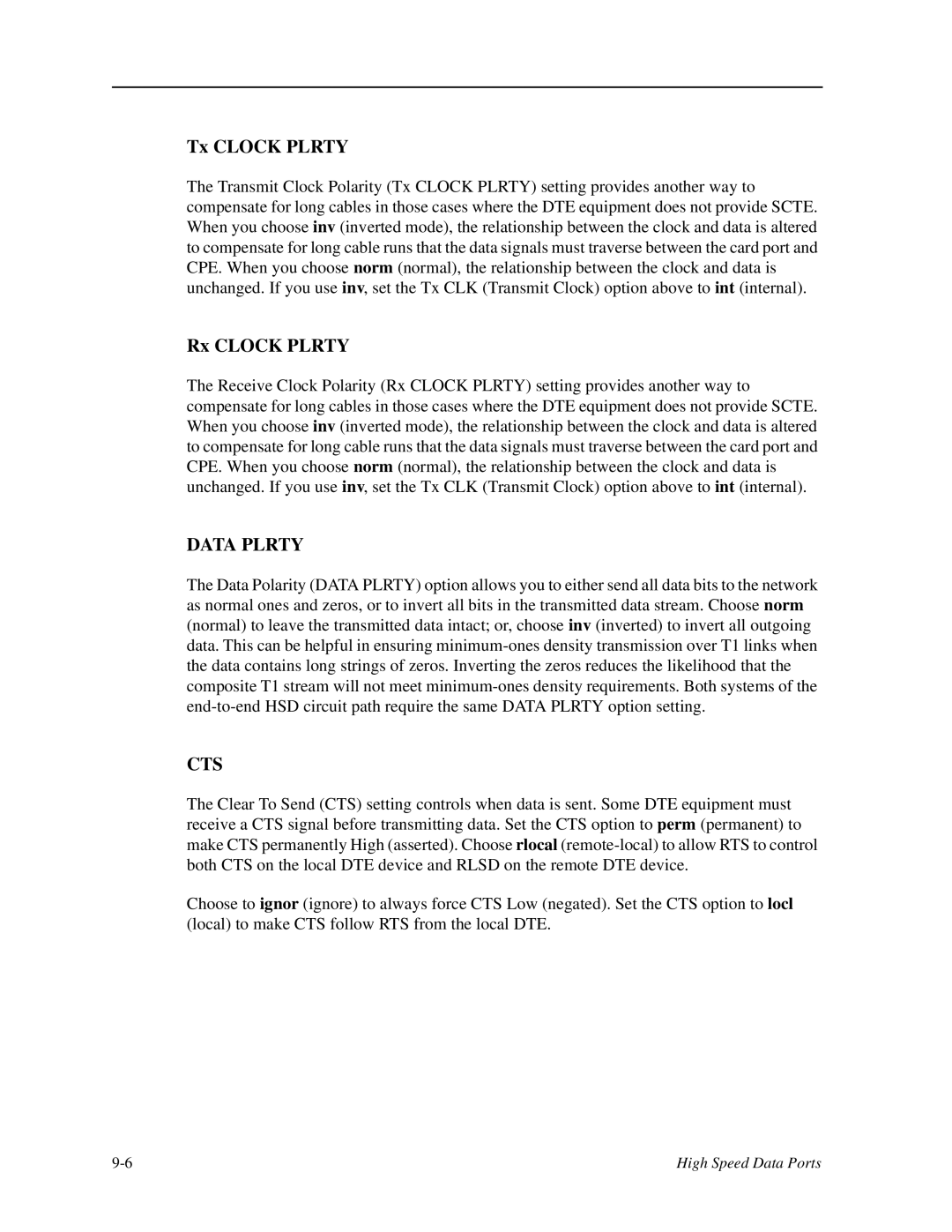Tx CLOCK PLRTY
The Transmit Clock Polarity (Tx CLOCK PLRTY) setting provides another way to compensate for long cables in those cases where the DTE equipment does not provide SCTE. When you choose inv (inverted mode), the relationship between the clock and data is altered to compensate for long cable runs that the data signals must traverse between the card port and CPE. When you choose norm (normal), the relationship between the clock and data is unchanged. If you use inv, set the Tx CLK (Transmit Clock) option above to int (internal).
Rx CLOCK PLRTY
The Receive Clock Polarity (Rx CLOCK PLRTY) setting provides another way to compensate for long cables in those cases where the DTE equipment does not provide SCTE. When you choose inv (inverted mode), the relationship between the clock and data is altered to compensate for long cable runs that the data signals must traverse between the card port and CPE. When you choose norm (normal), the relationship between the clock and data is unchanged. If you use inv, set the Tx CLK (Transmit Clock) option above to int (internal).
DATA PLRTY
The Data Polarity (DATA PLRTY) option allows you to either send all data bits to the network as normal ones and zeros, or to invert all bits in the transmitted data stream. Choose norm (normal) to leave the transmitted data intact; or, choose inv (inverted) to invert all outgoing data. This can be helpful in ensuring
CTS
The Clear To Send (CTS) setting controls when data is sent. Some DTE equipment must receive a CTS signal before transmitting data. Set the CTS option to perm (permanent) to make CTS permanently High (asserted). Choose rlocal
Choose to ignor (ignore) to always force CTS Low (negated). Set the CTS option to locl (local) to make CTS follow RTS from the local DTE.
High Speed Data Ports |
